William Wilberforce [1759-1833]
Text from my learning:
In 1825, at the age of 65, William Wilberforce retired, after a 45-year career as a Member of Parliament. Throughout his life, Wilberforce had suffered from bouts of ill-health and this was the main reason for his decision to leave Westminster.
The early abolitionists had hoped that ending British involvement in the Transatlantic Slave Trade, by the passing of the Abolition Bill in 1807, would end slavery altogether, but this was not the case. Wilberforce gave many speeches to parliament following the 1807 Bill and in 1823 he began a campaign to emancipate (free) all slaves with the publication of a
[56-page] Appeal to the Religion, Justice and Humanity of the Inhabitants of the British Empire in Behalf of the Negro Slaves in the West Indies.'
During the last few months of his life, Wilberforce grew increasingly weak and frail and spent his last days surrounded by his family and friends at his cousin's house, Cadogan Place, near Westminster, London. William Wilberforce died on 29 July, 1833, aged 73 years of age.
His death came just three days after the Abolition of Slavery Bill in the British Colonies was passed by parliament, freeing all slaves in these places. Just before he died, Wilberforce was visited by his old Clapham Sect friend, Thomas Babington Macaulay [1800-1859], who told him the news of the passing of the abolition bill. Wilberforce is reported to have said: 'Thank god that I should have lived to witness the day in which England is willing to give 20 millions sterling for the abolition of slavery.'
Within hours of his death, over a hundred high profile figures, including the Lord Chancellor, wrote to request that Wilberforce be buried in Westminster Abbey in recognition of his achievements.
On 3 August, 1833, the York Herald newspaper recorded Wilberforce's death by declaring that:
with which there is probably associated more love and veneration than ever fell to the lot of any civilised individual throughout the civilised globe ... His warfare is accomplished, his cause is finished; he kept the Faith. Those who regard him merely as a philanthropist, in the worldly sense of that abused term, know but little of his character'.
Following Wilberforce's burial, the Herald went on 'Thus terminated the mortal career of as pure and virtuous a man as ever lived...'
Back in Hull, a public meeting was held on 12 August 1833, at which citizens expressed their admiration of Wilberforce's dedication: This meeting contemplates with the warmest admiration the splendid career, during the period of half a century, of our late townsman, William Wilberforce who, while he exhibited in private life all those virtues which spring from the cordial reception of Christian principles, in public life declined every scheme of personal aggrandisement... It would not be creditable to the character of the town, which justly glories in having been the birthplace of such a man, and in having first sent him into Parliament, to suffer him to sink into his grave without raising some lasting monument of its veneration and affection for his memory.
In 1835, a monument to Wilberforce was erected in Hull city centre in the style of Nelson's column in London. Wilberforce House opened as a museum on 24 August, 1906. A plaque in the room known to be where Wilberforce was born read 'Statesman, orator, philanthropist, saint.'

|  December 6, 1810 - Wilberforce, New South Wales (Australia). "In 1810 Governor Lachlan Macquarie, having created the five Macquarie towns, explained 'on the North or left Bank of the Hawkesbury, I have named Wilberforce - in honor of & out of respect to the good & virtuous Wm. Wilberforce Esqr. M.P. – a true Patriot & the real Friend of Mankind...'" Thus named only three years after the Abolition Bill! /// Image shows war memorial "Erected by the Residents of Wilberforce 1918." December 6, 1810 - Wilberforce, New South Wales (Australia). "In 1810 Governor Lachlan Macquarie, having created the five Macquarie towns, explained 'on the North or left Bank of the Hawkesbury, I have named Wilberforce - in honor of & out of respect to the good & virtuous Wm. Wilberforce Esqr. M.P. – a true Patriot & the real Friend of Mankind...'" Thus named only three years after the Abolition Bill! /// Image shows war memorial "Erected by the Residents of Wilberforce 1918."
|
 |  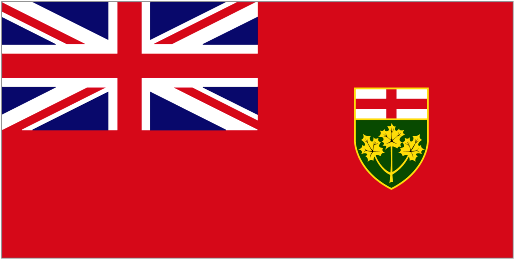 About 1829 - Wilberforce Colony, Ontario (Canada). "Established by free African American citizens, north of present-day London, Ontario. An effort by American blacks to create a place where they could live in political freedom.
When American black communities favored emigration at all (& many did not), they preferred going to a country where free blacks could hold full political control of their destiny. Wilberforce Colony was one such movement. It was planned by blacks from Cincinnati, Ohio, who emigrated following passage of discriminatory laws in 1828 and a destructive riot against them in 1829.
The frontier colony grew quickly [but] internal disputes, lack of funding & the draw of urban jobs led to its decline by 1850. Altogether, Wilberforce Colony survived as an independent community fewer than 20 years." /// Image shows Wilberforce railroad station in early 1900's. About 1829 - Wilberforce Colony, Ontario (Canada). "Established by free African American citizens, north of present-day London, Ontario. An effort by American blacks to create a place where they could live in political freedom.
When American black communities favored emigration at all (& many did not), they preferred going to a country where free blacks could hold full political control of their destiny. Wilberforce Colony was one such movement. It was planned by blacks from Cincinnati, Ohio, who emigrated following passage of discriminatory laws in 1828 and a destructive riot against them in 1829.
The frontier colony grew quickly [but] internal disputes, lack of funding & the draw of urban jobs led to its decline by 1850. Altogether, Wilberforce Colony survived as an independent community fewer than 20 years." /// Image shows Wilberforce railroad station in early 1900's. 
|
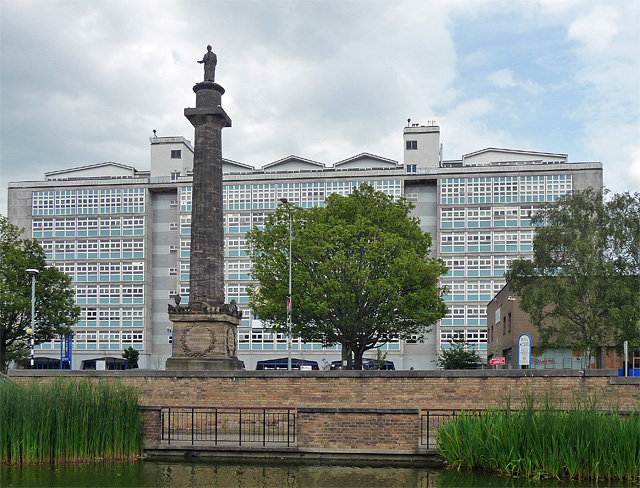
|  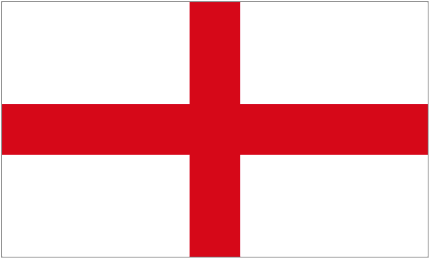 November 1835 - Wilberforce Monument, Queen's Garderns, Hull (England). "The column is 90 feet, and the statue on top is 12 feet tall, carved out of hard-wearing millstone grit. The statue was, in fact, an after-thought by the monument committee. It was sculpted by a Mr. Feort in Dock Street." Photo was taken in 1903. /// "William Wilberforce [1759-1833] was a British politician, philanthropist & a leader of the movement to abolish the slave trade." November 1835 - Wilberforce Monument, Queen's Garderns, Hull (England). "The column is 90 feet, and the statue on top is 12 feet tall, carved out of hard-wearing millstone grit. The statue was, in fact, an after-thought by the monument committee. It was sculpted by a Mr. Feort in Dock Street." Photo was taken in 1903. /// "William Wilberforce [1759-1833] was a British politician, philanthropist & a leader of the movement to abolish the slave trade."
|
 |   1840 - Statue of William Wilberforce, North & South Choir, Westminster Abbey, London (England). William Wilberforce [1759-1833] was a leader of the movement to abolish the slave trade. /// Image shows Queen Elizabeth at the statue just before a service in March 2007 marking the 200th anniversary of the abolition of the slave trade. One of 309 London monuments in Kershman (2007), page 83. 1840 - Statue of William Wilberforce, North & South Choir, Westminster Abbey, London (England). William Wilberforce [1759-1833] was a leader of the movement to abolish the slave trade. /// Image shows Queen Elizabeth at the statue just before a service in March 2007 marking the 200th anniversary of the abolition of the slave trade. One of 309 London monuments in Kershman (2007), page 83.
|


 |   1856 - Wilberforce University, Wilberforce, Ohio (USA). "A a private, coed, liberal arts historically black university (HBCU). Affiliated with African Methodist Episcopal (AME) Church. The first college to be owned & operated by African Americans." /// NB: Town & university "named for the English statesman William Wilberforce [1759-1833], who worked for abolition of slavery & achieved the end of the slave trade in the United Kingdom & its empire [in 1833]." 1856 - Wilberforce University, Wilberforce, Ohio (USA). "A a private, coed, liberal arts historically black university (HBCU). Affiliated with African Methodist Episcopal (AME) Church. The first college to be owned & operated by African Americans." /// NB: Town & university "named for the English statesman William Wilberforce [1759-1833], who worked for abolition of slavery & achieved the end of the slave trade in the United Kingdom & its empire [in 1833]."
|
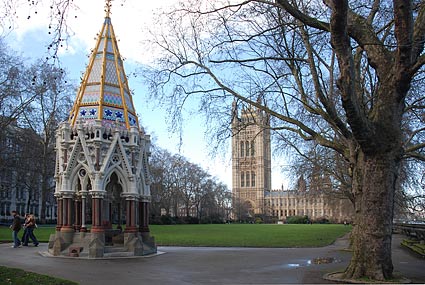
|   1865 - Buxton Memorial Fountain, Victoria Tower Gardens, Millbank, Westminster, London (England). "Commemorates the emancipation of slaves in 1834. Erected by Charles Buxton, MP [1823-1871], & dedicated to his father Sir Thomas Foxwell Buxton [1786-1845]. Also to abolitionists William Wilberforce, Thomas Clarkson, Thomas Babington Macaulay, Henry Brougham & Stephen Lushington. Designed by Gothic architect Samuel Sanders Teulon [1812-1873]... Originally in Parliament Square, removed in 1940 & moved to its present position in 1957."
1 of 45 monuments in "Peace Trails through London" by Valerie Flessati (2012), page 8. 1865 - Buxton Memorial Fountain, Victoria Tower Gardens, Millbank, Westminster, London (England). "Commemorates the emancipation of slaves in 1834. Erected by Charles Buxton, MP [1823-1871], & dedicated to his father Sir Thomas Foxwell Buxton [1786-1845]. Also to abolitionists William Wilberforce, Thomas Clarkson, Thomas Babington Macaulay, Henry Brougham & Stephen Lushington. Designed by Gothic architect Samuel Sanders Teulon [1812-1873]... Originally in Parliament Square, removed in 1940 & moved to its present position in 1957."
1 of 45 monuments in "Peace Trails through London" by Valerie Flessati (2012), page 8.
|

 | 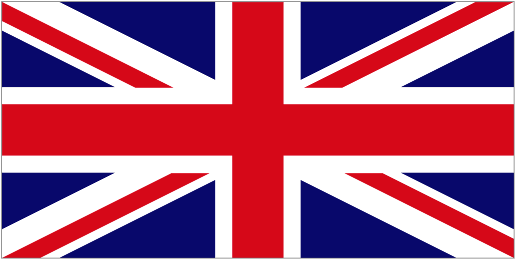  November 11, 1881 - Clarkson Memorial, Bridge Street, Wisbech, Cambridgeshire (England). "Commemorates Thomas Clarkson [1760-1846], a central figure in the campaign against the slave trade in the British empire, and a former native of Wisbech. Consists of a statue mounted on a platform. Above this, rises a canopy, in the form of a spire. The whole structure is 68 feet (20.6 m) high. On three of the four sides are carved bas-reliefs, representing William Wilberforce & Granville Sharp [1735-1813], both prominent figures in the campaign against the slave trade & a manacled slave in a beseeching attitude. [Sharp was a founder of Freetown, Sierra Leone.] The fourth side bears an inscription to the memory of Clarkson... Design adapted from Sir George Gilbert Scott RA, who also designed Martyrs' Memorial (1841) in Oxford & Albert Memorial (1876) in London." November 11, 1881 - Clarkson Memorial, Bridge Street, Wisbech, Cambridgeshire (England). "Commemorates Thomas Clarkson [1760-1846], a central figure in the campaign against the slave trade in the British empire, and a former native of Wisbech. Consists of a statue mounted on a platform. Above this, rises a canopy, in the form of a spire. The whole structure is 68 feet (20.6 m) high. On three of the four sides are carved bas-reliefs, representing William Wilberforce & Granville Sharp [1735-1813], both prominent figures in the campaign against the slave trade & a manacled slave in a beseeching attitude. [Sharp was a founder of Freetown, Sierra Leone.] The fourth side bears an inscription to the memory of Clarkson... Design adapted from Sir George Gilbert Scott RA, who also designed Martyrs' Memorial (1841) in Oxford & Albert Memorial (1876) in London."
|
.jpg) |  Date? - Wilberforce Monument, Village of Wilberforce, Freetown (Sierra Leone). "William Wilberforce is very important to the history of Freetown so in recognition of that there is a statue to his honour next to the Wilberforce cotton tree. A well looked after monument... In Freetown you cannot help run into the name Wilberforce. There is Wilberforce Street in the downtown area and a village of that name. In years gone by, as in London, villages would have been separate entities but as the city has grown the villages have merged together.
[There is a sign on an] Old Railway Line marking Wilberforce on a short branch railway of 5.5 miles length built in 1903 from Freetown to Hill Station, at 748 feet above sea level. The line allowed Europeans to live in the healthier hills area above Freetown, but with competition from motor cars it closed in 1929..." Date? - Wilberforce Monument, Village of Wilberforce, Freetown (Sierra Leone). "William Wilberforce is very important to the history of Freetown so in recognition of that there is a statue to his honour next to the Wilberforce cotton tree. A well looked after monument... In Freetown you cannot help run into the name Wilberforce. There is Wilberforce Street in the downtown area and a village of that name. In years gone by, as in London, villages would have been separate entities but as the city has grown the villages have merged together.
[There is a sign on an] Old Railway Line marking Wilberforce on a short branch railway of 5.5 miles length built in 1903 from Freetown to Hill Station, at 748 feet above sea level. The line allowed Europeans to live in the healthier hills area above Freetown, but with competition from motor cars it closed in 1929..."
|
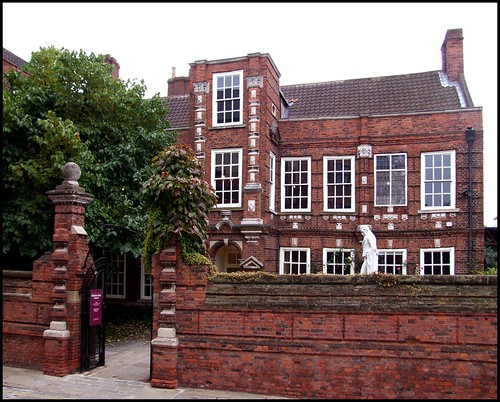 |   August 24, 1906 - Wilberforce House & Statue, Wilberforce House Museum, 23-25 High Street, Hull (England). "Oldest anti-slavery museum in the world... Explores the history of slavery, abolition and the legacy of slavery today. The birthplace of slavery abolitionist William Wilberforce [1759-1833]." One of only 4 "musuems for peace" in the UK (vs. about 70 in the USA). August 24, 1906 - Wilberforce House & Statue, Wilberforce House Museum, 23-25 High Street, Hull (England). "Oldest anti-slavery museum in the world... Explores the history of slavery, abolition and the legacy of slavery today. The birthplace of slavery abolitionist William Wilberforce [1759-1833]." One of only 4 "musuems for peace" in the UK (vs. about 70 in the USA).
|
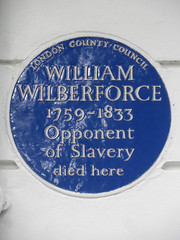

 |   1961 - Blue Plaque, 44 Cadogan Place, Belgravia, Chelsea, London (England). "44 Cadogan Place was home to William Wilberforce for the last two years of his life." "This London County Council blue plaque, to denote that William Wilberforce "died here [in 1833]," is attached to a building on the north east side of Cadogan Place." 1961 - Blue Plaque, 44 Cadogan Place, Belgravia, Chelsea, London (England). "44 Cadogan Place was home to William Wilberforce for the last two years of his life." "This London County Council blue plaque, to denote that William Wilberforce "died here [in 1833]," is attached to a building on the north east side of Cadogan Place."
|

 |   March 25, 2007 - Wilberforce House, High Street, Hull (England). "Birthplace of William Wilberforce [1759-1833], the famous abolitionist & MP who was most influential in the abolition of slavery, which became his life's work. Like the nearby Blaydes House & Maister House, formerly a Merchant's house with access to quayside on the River Hull. Part of Hull's Museum Quarter incorporating the Nelson Mandela garden (qv).
Now a museum which re-opened on 25 March 2007 after a two-year £1.6 million redevelopment, in time for the 200th anniversary of Wilberforce's Act of Parliament abolishing the slave trade in the British Empire. The new exhibition has a broad focus on the history of slavery in addition to materials relating to the life & work of Wilberforce. The front garden contains a statue of Wilberforce which underwent a £10,000 restoration to preserve it in 2011. Adjoining the site is the University of Hull's Wilberforce Institute for the Study of Slavery & Emancipation which conducts research into historic & contemporary forms of slavery." March 25, 2007 - Wilberforce House, High Street, Hull (England). "Birthplace of William Wilberforce [1759-1833], the famous abolitionist & MP who was most influential in the abolition of slavery, which became his life's work. Like the nearby Blaydes House & Maister House, formerly a Merchant's house with access to quayside on the River Hull. Part of Hull's Museum Quarter incorporating the Nelson Mandela garden (qv).
Now a museum which re-opened on 25 March 2007 after a two-year £1.6 million redevelopment, in time for the 200th anniversary of Wilberforce's Act of Parliament abolishing the slave trade in the British Empire. The new exhibition has a broad focus on the history of slavery in addition to materials relating to the life & work of Wilberforce. The front garden contains a statue of Wilberforce which underwent a £10,000 restoration to preserve it in 2011. Adjoining the site is the University of Hull's Wilberforce Institute for the Study of Slavery & Emancipation which conducts research into historic & contemporary forms of slavery."
|

 |   2007 - "Gift of Cain," Fen Court, off Fenchurch Street, London (England). " Incorporates 17 cylindrical granite columns erected before a granite platform." Marks the bicentenary of the abolition of the transatlantic slave trade. Sculpted by Michael Visocchi who worked with Lemin Sissay, whose poem combines stock exchange jargon with the Biblical story of Cain & Abel & references to William Wilberforce [1759-1833]. Unveiled by Desmond Tutu. John Newton [1725-1807] preached in the nearby church of St. Mary Woolnoth.
Info courtesy of Valerie Flessati (2012). This is 1 of 45 monuments in her "Peace Trails through London," page 15. 2007 - "Gift of Cain," Fen Court, off Fenchurch Street, London (England). " Incorporates 17 cylindrical granite columns erected before a granite platform." Marks the bicentenary of the abolition of the transatlantic slave trade. Sculpted by Michael Visocchi who worked with Lemin Sissay, whose poem combines stock exchange jargon with the Biblical story of Cain & Abel & references to William Wilberforce [1759-1833]. Unveiled by Desmond Tutu. John Newton [1725-1807] preached in the nearby church of St. Mary Woolnoth.
Info courtesy of Valerie Flessati (2012). This is 1 of 45 monuments in her "Peace Trails through London," page 15.
|
 
 |   October 27, 2016 - Gilded Scroll of Abolition, Wilberforce Monument (qv), Hull (England). "Held in William Wilberforce’s right hand on top of the monument... The scroll was double gilded in 23.5 carat gold leaf that will last throughout this century & into the next, seeing out the tercentenary of abolition! This continues to create a talking point as more people notice the glint of gold, raising the profile of the efforts of all those involved in the abolition movement & bringing prominence to the most important aspect of the story..." October 27, 2016 - Gilded Scroll of Abolition, Wilberforce Monument (qv), Hull (England). "Held in William Wilberforce’s right hand on top of the monument... The scroll was double gilded in 23.5 carat gold leaf that will last throughout this century & into the next, seeing out the tercentenary of abolition! This continues to create a talking point as more people notice the glint of gold, raising the profile of the efforts of all those involved in the abolition movement & bringing prominence to the most important aspect of the story..."
|










.jpg)






